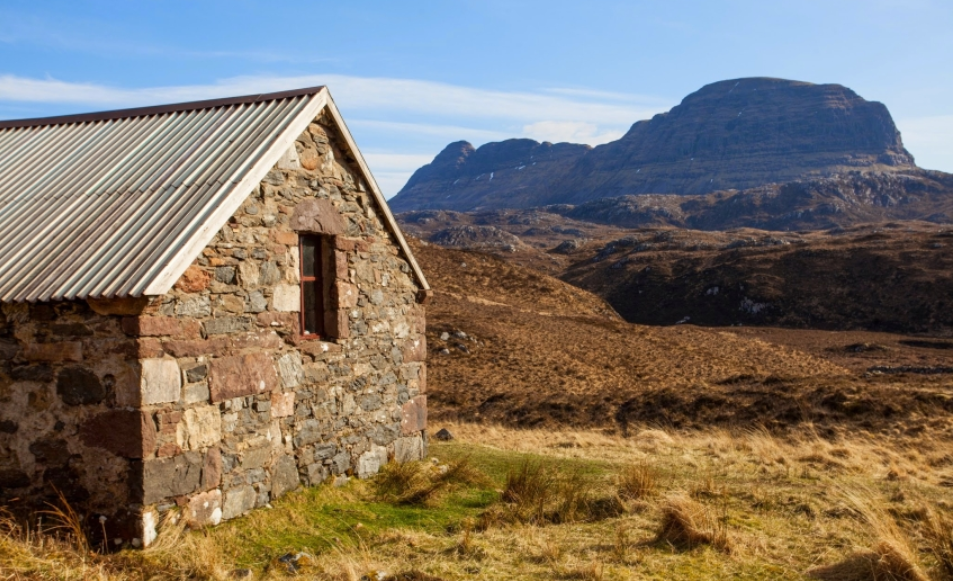Your Cart is Empty
Extra 10% Off Sale Items - Discount applied in basket
Extra 10% Off Sale Items - Discount applied in basket
Extra 10% Off Sale Items - Discount applied in basket
Extra 10% Off Sale Items - Discount applied in basket
September 01, 2019 4 min read

Whether you’re a seasoned bothy user or want to learn more about using these incredible buildings, we’ve put together a guide covering the dos and don’ts, as well as what makes bothies so special and how you can use one during your next Scottish adventure.
Bothy comes from the Gaelic word “bothan” meaning hut and their original use was to give refuge to farm labourers or estate workers who looked after animals or crops. Thanks to organisations such as the Mountain Bothies Association (MBA), there are close to one hundred bothies which have been maintained for modern day use. The MBA describe bothies as:
“A simple shelter in remote country for the use and benefit of all those who love being in wild and lonely places”.
Free accommodation in remote, stunning locations does sound incredible, but the reality of staying in a bothy requires a lot of preparation and knowledge. It would be more appropriate to think of staying in a bothy as like camping with a stone tent. Assume that there will also be no facilities, such as running water, electricity or beds. Most do come with a fireplace, but don’t rely on having access to wood to burn.
Often referred to as the bothy code, this is a basic set of guidelines which users of bothies should adhere to. In a nutshell, it’s about leaving the bothy in the same condition as you found it. Bothies work on and rely on shared trust, and the following guidelines enable users to properly preserve and protect bothies:
1. Respect other bothy users
Leave the bothy clean and tidy, with dry kindling for the next visitors. Be considerate to other users and make other visitors welcome, even if you got there first.
2. Respect the bothy
Report any damage you notice to the relevant authority. Don’t graffiti or vandalise the bothy. Carry out any waste which can’t be burned. It’s important not to bury it as this pollutes the environment. Make sure that all fires are completely extinguished before leaving and make sure to close all windows and doors.
3. Respect the surroundings
If there is no toilet (likely), then use the spade provided to bury human waste. Make sure this is well away from the bothy and the water supply. Be considerate too when washing pots, socks etc by going downstream from the place where people use this for drinking water. Wash your possessions away from the streams and then pour any waste water on the ground where it cannot flow directly back to the water source. It is also important not to cut live wood or damage the estate property.
4. Respect agreement with the estate
Observe restrictions on use of bothy, for example during stag stalking season or lambing time. Remember bothies are available for short stays only. If you intend to extend your stay, you must obtain the landowners permission first.
5. Respect number restrictions
To avoid overcrowding and due to limited facilities, bothies shouldn’t be used for groups of 6+ or for commercial groups.
If you are looking to plan an overnight stay in a bothy, then it’s important to treat it similar to a camping trip — be prepared and carry all the equipment you think you’ll need.
Bothies are usually located close to a burn (stream), so you’ll be able to get drinking water, but remember to boil it first if you have concerns about its quality.
During summer months, bothies can become quite a popular destination, therefore, it’s wise to carry a lightweight tent or bivvy bag for sleeping. You can use the shelter of the bothy for the communal area and to cook, but it might be best to have your tent to retire to if it’s too crowded inside for sleeping.
Besides clothing, we’d to recommend packing:
Sleeping bag
Sleeping matt
Lightweight tent or bivvy bag
Fuel
Stove, gas & lighter
Pan, utensils, cup, bowl
Food
High energy snacks (nuts, sweets, dried fruit)
Basic first aid kit, penknife, insect repellent (especially important if you’re visiting the west coast in the summer months)
Candles, matches
Toilet paper
Small shovel

Photo from MBA
1. Kearvaig, Northern Highlands
Situated just above the beach in the remote cove of Kearvaig Bay on the tip of Cape Wrath. To the east you’ll find the towering cliffs of Clò Mòr, the highest in mainland UK. In early summer these cliffs are home to thousands of birds including puffins, guillemots and razorbills.

Photo from MBA
2. The Lookout, Isle of Skye
Sat atop the cliffs of Rubha Hunnish, this bothy boasts spectacular view over the Minch, the Isle of Lewis and Harris in the Outer Hebrides. In the early hours of the morning you may be lucky enough to catch a glimpse of whales and dolphins.

Photo from MBA
3. Suileag, Northern Highlands
This bothy is all about a room with a view, the Iconic Suilven (731m), one of Britain’s most distinct mountains, famed for its remoteness and distinctive standstone ridge, towers in the foothills.
If you would like to find out more about Scotland’s bothies we’d recommend picking up ‘The Scottish Bothy Bible’.
Comments will be approved before showing up.
